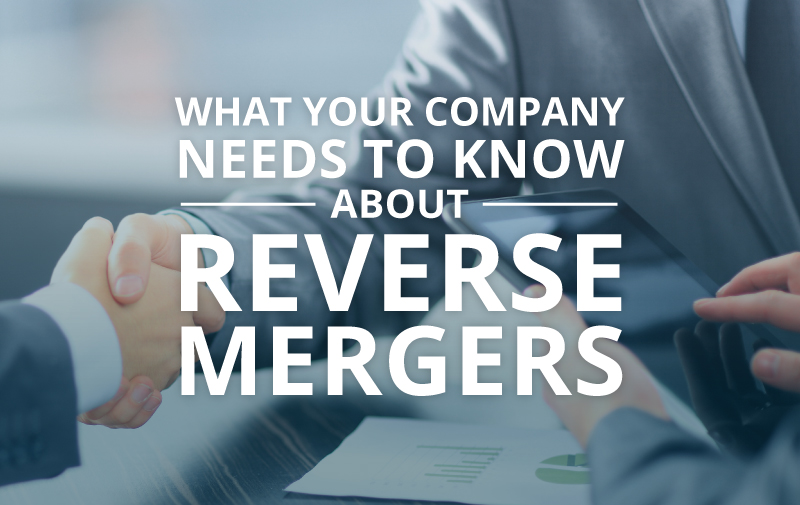What is a Reverse Merger?
A reverse merger, the most common alternative form of a public offering, allows a privately-held company to go public by acquiring a controlling interest in and merging with an existing public company. The existing public company can be in the form of an operating public company or a “shell company,” which is a publicly-traded company that has no or nominal operations and assets.
How a Reverse Merger Works
In a reverse merger, the shareholders of the private company exchange their shares for new or existing shares of the public company, resulting in:
- The shareholders of the private company owning a majority of the public company, and
- The private operating company becoming a wholly-owned subsidiary of the public company. The public company assumes the operations of the private company, and when the deal culminates, the private company becomes a publicly-traded entity that has acquired controlling interest in a public company.
A reverse merger is often structured as a reverse triangular merger. In that case, the public shell forms a new subsidiary that merges with the private operating business. At the closing, the private company shareholders exchange their ownership for shares in the public company. The primary benefit of the reverse triangular merger is the ease of shareholder consent. Since the sole shareholder of the acquisition subsidiary is the public company, the directors of the public company can approve the transaction on behalf of the acquiring subsidiary, thus avoiding the necessity of meeting the proxy requirements of the Securities Exchange Act of 1934.
Why Pursue a Reverse Merger
There are some attractive reasons why a company may want to consider a reverse merger.
- It creates access to the capital markets. Private companies only have access to private forms of equity, whereas public companies have access to a broader pool of public investors.
- Reverse mergers are often a less expensive and faster way of going public, compared to an IPO.
- Being public can give the company a higher perceived value to potential acquirers.
Considerations of a Reverse Merger
The primary advantage of a reverse merger is that it can be completed very quickly. However, it should be noted that a reverse merger transaction itself is not a capital-raising transaction. In fact, in a reverse merger transaction, the private operating business must pay for the public shell company. That payment may be in cash, equity or both. Most often, a financing is required either simultaneously with, or immediately following, the reverse merger. In general, accessing capital is easier for a public company than for a private company.
It is also important to know that reverse merger companies are restricted under Rule 144, which subjects any company that was ever a shell company to additional restrictions when investors sell unregistered stock.
Conclusion
A reverse merger is a strategic option for private companies who wish to gain public company status. It is a less time-consuming and less costly alternative than the conventional IPO. A company with public status will have more flexibility in terms of financing alternatives, and the company’s investors can also benefit from increased liquidity. Companies should also consider the additional compliance burdens that public companies face, as well as how the management teams will balance these requirements with running and growing the business.
Debbie Kaster, Managing Director


Leave a Reply